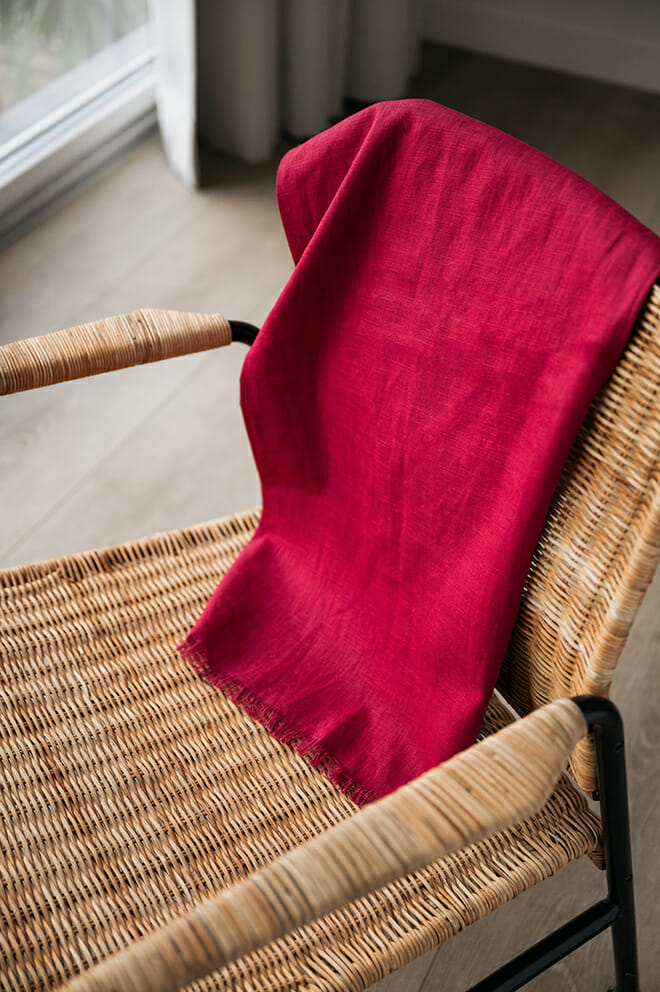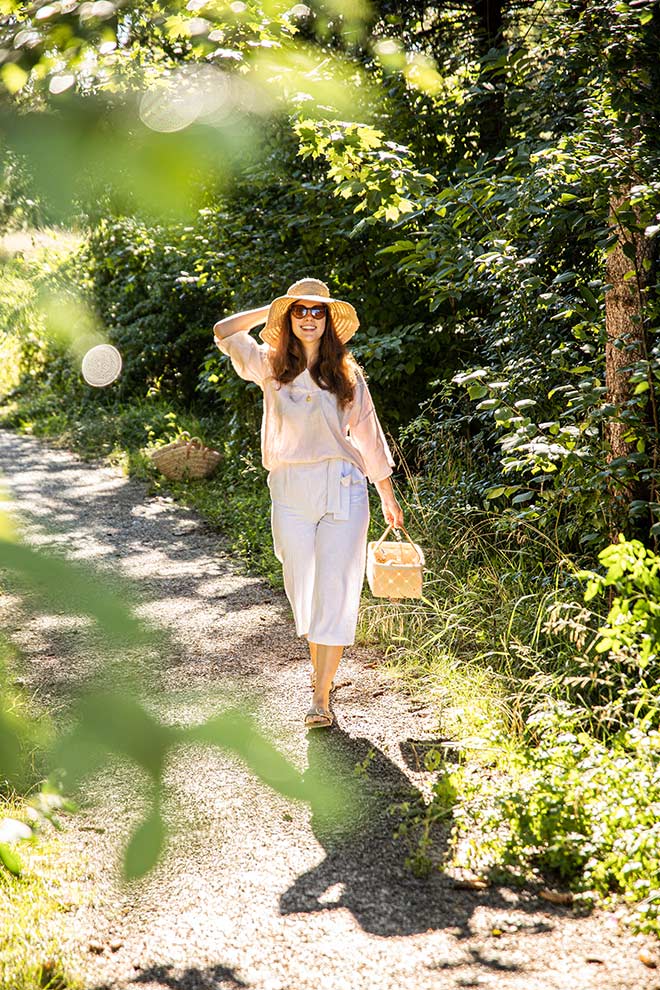Why Is Linen Scratchy?
Linen is a natural fiber that has a beautiful, soft hand and a luxurious look and feel.
Several people ask this question, ‘Is Linen Scratchy’? The answer is that linen is known to be scratchy. This is because linen is made of bast fiber that has been woven from the flax plant.
Bast fibers are densely packed with numerous cells, which gives them their tenacity and sturdiness (as opposed to cotton, which is a single-celled fiber). They are typically woven into carpets, ropes, and other durable materials. New linen sheets might get wrinkled and scratchy due to this rigidity.
Linen fabrics are woven with one or two weft threads that run across the width of the fabric. The warp threads run lengthwise down the fabric and are used to weave the pattern or design into the material.
The scratchy texture comes from these long, narrow warp threads that run through linen fabrics. They're very tightly woven together and can irritate sensitive skin if they rub against you too much during wear. That is why it might look not as comfy at first, but there are ways to make linen fabric soften over time.
How to Make Linen Fabric Softer?
There are several effective methods for softening linen items over time. Here are some tips on how to soften linen sheets:
Use vinegar
White vinegar may be used to soften linen fabric in a few different ways:
- Use vinegar. Vinegar can be used to soften linen sheets, tablecloths, towels, and napkins. You can add a cup of vinegar to the rinse water when washing your linens. This will help to remove soap residue and leave your linens feeling soft.
- Put a half cup of white vinegar in the washing machine. You can use white vinegar instead of detergent by combining one cup of water with one cup of white vinegar and adding the mixture to your wash.
- Mix vinegar with water. Add one cup of vinegar into one gallon of water and let the linen sheets soak in this mixture overnight. The next day, all you need to do is throw them into the washing machine. Not only will white vinegar soften your new linen sheets, but it will also get rid of any lingering odors from the washing powder or other detergent.
- Use homemade fabric softener. One other tip on how to make linen sheets softer is to make a natural fabric softener by mixing two cups of white vinegar with two cups of water in a spray bottle. Spray this mixture onto your linens after they have dried after washing them in warm water or drying them in the dryer on a low heat setting. This will help to restore their softness and luster since the vinegar neutralizes any remaining soap residue that might still be present on the surface of your linens when you are done washing them.
Use baking soda
If you are wondering how to soften linen clothes then there is another effective method. Baking soda is one of the easiest ways to soften your linen clothing and sheets. Baking soda is an excellent cleaner for linens because it helps remove stains from the fabric. It also acts as a natural deodorizer and will leave your linens smelling fresh after washing them.
To soften linen sheets, soak them in a tub filled with the dissolved baking soda for at least 24 hours (up to 48 hours). After some time has passed, you may either machine wash or hang dry the garments.
To soften linens and maintain a consistent pH level in the rinse water, add baking soda to every wash.
Do Vigorous Washing
Many people wonder, does linen get softer with washing? So, the answer is yes, your linen bedding and clothing becomes softer with each wash. However, there is no set need for the number of washes required to get the desired outcome. Softening process of your linen depends on each item's manufacturing.
With repeated washings, the additional lint that makes your linens scratchy will be removed.
You can use a washing machine or hand wash the fabric. The more you wash the fabric, the softer it will become. However, this method is not very effective on thick linen fabrics.
Use Dryer Balls
Another way to soften linen fabrics is by using dryer balls. These low-priced goods, available at most stores selling laundry supplies or online, will put an end to your search for a solution to the problem of how to make linen soft.
Clothing is subjected to several strikes from dryer balls as they roll around in the machine. While this produces heat, doing it over and over again breaks down the fabric's fibers. Dryer balls are the most efficient and effective way to soften and dry your linens quickly and organically.
Simply tossing in a couple of dryer balls to the machine with your linen sheets will not only help soften the fabric, but it will also help get the load dry up to 25% faster. To maximize the drying power of tennis balls, you should wet them before using them in the washer. It will make sure that the lint's scratchy feeling is much reduced.
Does Linen Get Softer with Washing?
The answer depends on how often you wash your linen sheets and how you wash them. With each washing, linen bed sheets become softer because they're washed in warm water with mild detergent or soap.
Linens are made up of natural fibers that are woven together very tightly to create a durable material that holds up well over time. When new linens come out of their packaging, they're usually quite stiff and scratchy feeling from being tightly woven together during manufacturing. This makes them difficult to use when freshly laundered because they don't feel soft against your skin like cotton does. Don't despair though — after washing several times, linen fibers get more flexible and softer, so your linens will start feeling much more comfortable than when they were new!
What Is the Softest Type of Linen?
Linen comes in many types, including linen and cotton blends, and each type offers different benefits. The most common types include:
- Damask Linen
- Venice Linen
- Loosely woven linens
- Huckaback Linen
- Plain Woven Linen
- Sheeting Linen
- Toweling Linen
- Handkerchief Linen
However, out of all the linens, the softest one is the Belgian linen. It's made from long-staple flax, which means it has fewer short fibers than other types of linen. These short fibers are what give other linens their scratchy feel.
True Belgian Linen is vetted and trademarked after a lengthy selection process. Fewer than a thousand weavers in Belgium are members of the group and hence capable of weaving unique linen.
The softness of Belgian linen comes at a cost: it's also more expensive than other types of linen. But if you want your clothes or sheets to be as soft as possible, Belgian linen will deliver!
Conclusion
In this article, we've looked at some of the most effective methods of how to soften linen clothing. We've also talked about some of the safest ways to make the linen feel softer so that you can avoid damaging your sheets and garments while they're in the wash.
If you want to make sure that your linens are soft and smooth, try using one or more of these methods before putting your high quality linen clothes in the dryer. You'll be able to enjoy wearing them for longer without worrying about the scratchy texture or uncomfortableness on your skin!




Leave a comment
This site is protected by hCaptcha and the hCaptcha Privacy Policy and Terms of Service apply.